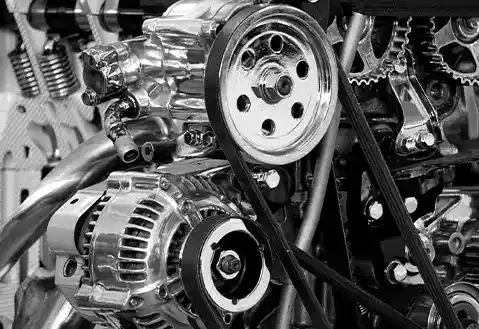- Arabic
- French
- Russian
- Spanish
- Portuguese
- Turkish
- Armenian
- English
- Albanian
- Amharic
- Azerbaijani
- Basque
- Belarusian
- Bengali
- Bosnian
- Bulgarian
- Catalan
- Cebuano
- Corsican
- Croatian
- Czech
- Danish
- Dutch
- Afrikaans
- Esperanto
- Estonian
- Finnish
- Frisian
- Galician
- Georgian
- German
- Greek
- Gujarati
- Haitian Creole
- hausa
- hawaiian
- Hebrew
- Hindi
- Miao
- Hungarian
- Icelandic
- igbo
- Indonesian
- irish
- Italian
- Japanese
- Javanese
- Kannada
- kazakh
- Khmer
- Rwandese
- Korean
- Kurdish
- Kyrgyz
- Lao
- Latin
- Latvian
- Lithuanian
- Luxembourgish
- Macedonian
- Malgashi
- Malay
- Malayalam
- Maltese
- Maori
- Marathi
- Mongolian
- Myanmar
- Nepali
- Norwegian
- Norwegian
- Occitan
- Pashto
- Persian
- Polish
- Punjabi
- Romanian
- Samoan
- Scottish Gaelic
- Serbian
- Sesotho
- Shona
- Sindhi
- Sinhala
- Slovak
- Slovenian
- Somali
- Sundanese
- Swahili
- Swedish
- Tagalog
- Tajik
- Tamil
- Tatar
- Telugu
- Thai
- Turkmen
- Ukrainian
- Urdu
- Uighur
- Uzbek
- Vietnamese
- Welsh
- Bantu
- Yiddish
- Yoruba
- Zulu
Dec . 12, 2024 04:08 Back to list
v belt
Understanding V-Belts The Backbone of Mechanical Power Transmission
In the realm of mechanical engineering and machinery, power transmission is a crucial aspect that enables various components to work in harmony. Among the multitude of mechanisms employed to transfer power, V-belts have emerged as a vital component in a wide range of applications. Their unique design and functionality contribute significantly to the efficiency and reliability of machinery across various industries.
What is a V-Belt?
A V-belt is an endless loop of flexible material with a cross-section resembling the letter V. This design allows the belt to fit snugly into the grooves of pulleys, facilitating efficient power transfer. V-belts are manufactured from a combination of rubber and synthetic materials, providing durability and flexibility. The V shape enhances the frictional grip between the belt and the pulley, which is essential for effective power transmission.
Types of V-Belts
There are several types of V-belts designed to suit different applications. The most common types include
1. Classic V-Belts These are the traditional belts used in a wide range of machines. They are typically used in light to medium-duty applications.
2. Wedge V-Belts With a narrower profile, wedge V-belts offer a higher power transmission capacity and are ideal for heavy-duty applications. Their design allows for tighter packing and more efficient energy transfer.
3. Raw Edge V-Belts These belts provide improved grip and are often used in high-performance applications. The raw edges increase the surface area in contact with the pulley, enhancing friction and reducing slippage.
4. Variable Speed V-Belts Designed for applications requiring speed adjustments, these belts can handle variable drive applications with ease.
Advantages of V-Belts
V-belts are widely favored in various industrial settings due to their several advantages
v belt

- Efficiency The V-shape design minimizes slippage, ensuring optimal power transfer. This efficiency leads to reduced energy consumption and improved performance.
- Flexibility V-belts can easily navigate around pulleys and other components, making them ideal for compact machinery designs.
- Maintenance V-belts require minimal maintenance compared to other power transmission systems. Regular inspection can help identify wear, but replacements can be made easily when necessary.
- Cost-Effectiveness Generally, V-belts are more affordable than other power transmission systems, making them an economical choice for many industries.
Applications of V-Belts
V-belts are ubiquitous in various industries, serving applications ranging from automotive to manufacturing. In the automotive industry, they are crucial for driving essential components like alternators, water pumps, and air conditioning compressors. Similarly, in manufacturing, V-belts are employed in conveyor systems, assembly lines, and numerous machinery types, allowing for the efficient movement of goods and materials.
Additionally, V-belts are extensively used in HVAC systems, agricultural machinery, and even in home appliances like washing machines and lawnmowers. Their versatility and reliability make them an essential component in many mechanical systems.
Proper Installation and Maintenance
To ensure the longevity and efficiency of V-belts, proper installation and maintenance are key. The belts must be aligned correctly with their respective pulleys to prevent excessive wear and potential failures. Tensioning is also critical; over-tensioned belts can cause premature wear, while under-tensioned belts may slip and lead to inefficient performance.
Periodic inspections should be conducted to check for signs of wear, such as cracking, fraying, or glazing. Addressing these issues promptly can prevent more significant problems in the future, ensuring that machinery operates smoothly.
Conclusion
V-belts play an integral role in the efficiency and effectiveness of mechanical systems. Their unique design, coupled with their ability to provide reliable power transmission, makes them indispensable in various applications. As technology continues to evolve, V-belts will undoubtedly remain a vital component in the world of mechanical engineering, reflecting the enduring legacy of this simple yet effective power transmission mechanism.
-
Precision Double-Sided Toothed Endless Flat Drive Belts
NewsAug.09,2025
-
Durable Tooth Belts: Precision Power for Poly V Belt Drives
NewsAug.08,2025
-
Reliable Diesel Engine Belts & Tensioners for Optimal Performance
NewsAug.07,2025
-
23100-KVB-901 Drive Belt for Honda VARIO | OEM Performance
NewsAug.06,2025
-
Variable Belt Drive AI Optimized for Efficiency
NewsAug.05,2025
-
High-Quality Tensioner Belt Pulley - Durable & Efficient
NewsAug.03,2025

